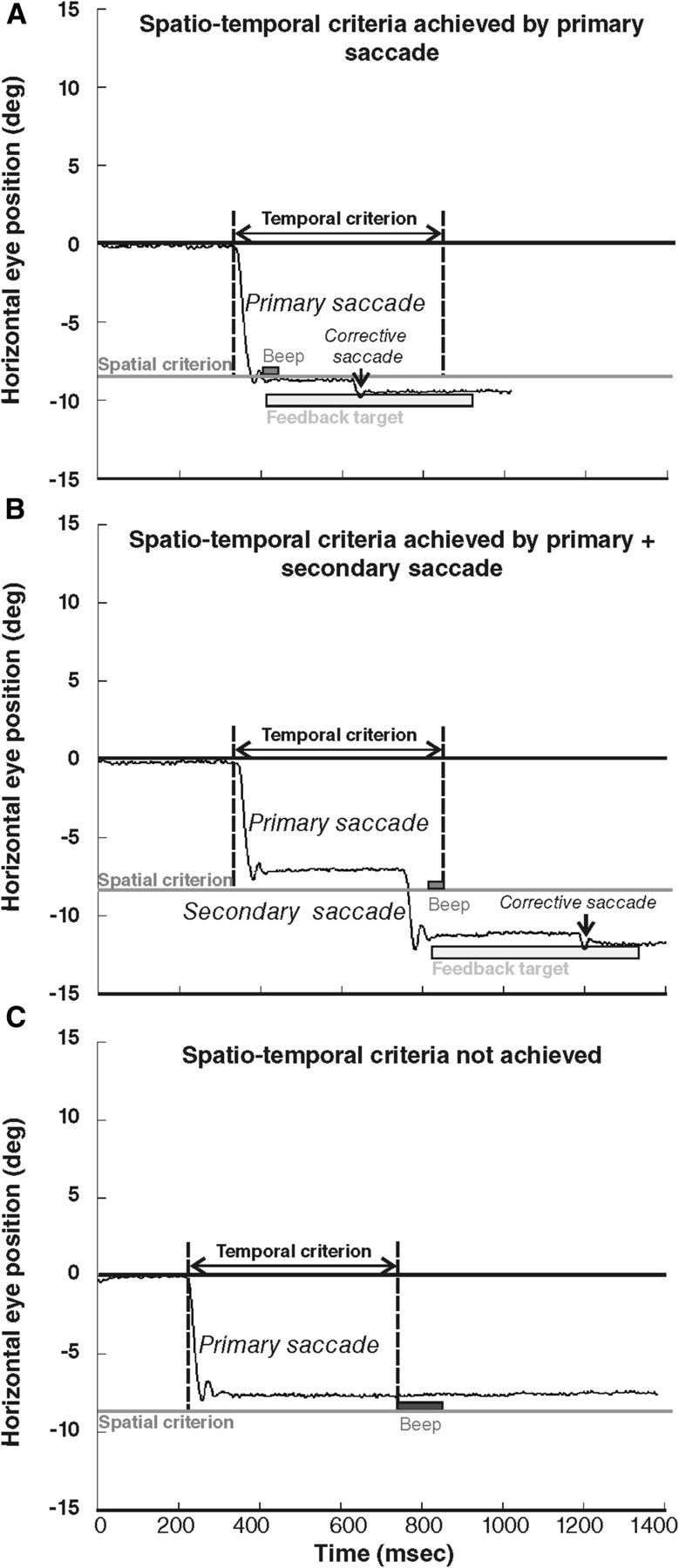Figure 2.

Oculomotor behavior during the adaptation exposure phase, exemplified by responses of subject 2 to the 9° target. The black line represents the horizontal eye position (in degrees) according to time (in milliseconds). Negative values represent left eye positions. The gray line represents the minimum amplitude required for the feedback target occurrence (spatial criterion). The temporal criterion is the 500 ms period initiated at the beginning of the saccade (vertical dotted lines). In A and B, the eyes crossed the spatial criterion by one (A) or two (B) saccades executed in due time relative to the temporal criterion. Light gray rectangle illustrates the 500 ms presentation of the feedback target occurring at the completion of the first saccade that crossed the spatial criterion (note the corrective saccade elicited by the feedback target). In C, the primary saccade does not reach the spatial criterion, and no other saccade was performed by the subject within the temporal criterion; therefore, no feedback target was presented. Auditory feedback is also represented immediately after the saccade crossed the spatial criterion in A and B (high-pitch “success” sound) and at the end of the temporal criterion in C (low-pitch “error” sound).
